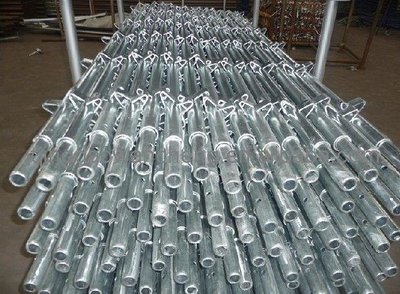

Pipe and Scaffold
Scaffolding Pipes are widely used for supporting man and materials, tools and tackles during construction, alteration, demolition and maintenance works because of their several advantages over conventional type of timber / bamboo scaffolding. Generally, made of hot dipped, galvanized steel, which offers long-term corrosion resistance, it won't rot, absorb moisture, split, splinter, swell, warp or burn, thereby providing considerable life-cycle cost savings. While weighing less than the average wood scaffold plank, steel scaffolding is stiffer over any given span, reducing bounce and providing a more stable platform.
The purpose of a working scaffold is to provide a safe place of work with safe access suitable for the work being done. The European Standard sets out performance requirements for working scaffolds. These are substantially independent of the materials of which the scaffold is made. The standard is intended to be used as the basis for enquiry and design. Pipe staging is very common in the U.S. Welded sections stack on top of each other and braced with cross braces, workers stand on planks or aluminum platforms.
The basic components of scaffolding are tubes, couplers and boards. Tubes are usually made either of steel or aluminium, although there is composite scaffolding, which uses filament-wound tubes of glass fibre in a nylon orpolyester matrix, because of the high cost of composite tube, it is usually only used when there is a risk from overhead electric cables that cannot be isolated. If steel, they are either 'black' or galvanised. The tubes come in a variety of lengths and a standard diameter of 48.3 mm. (1.5 NPS pipe). The chief difference between the two types of metal tubes is the lower weight of aluminium tubes (1.7 kg/m as opposed to 4.4 kg/m). However they are more flexible and have a lower resistance to stress. Tubes are generally bought in 6.3 m lengths and can then be cut down to certain typical sizes. Good foundations are essential. Often scaffold frameworks will require more than simple base plates to safely carry and spread the load. Scaffolding can be used without base plates on concrete or similar hard surfaces, although base plates are always recommended. For surfaces like pavements or tarmac base plates are necessary. Working from scaffolding is much easier and safer than working from a ladder. It's stable, forms a wide work platform and provides a wide reach.

